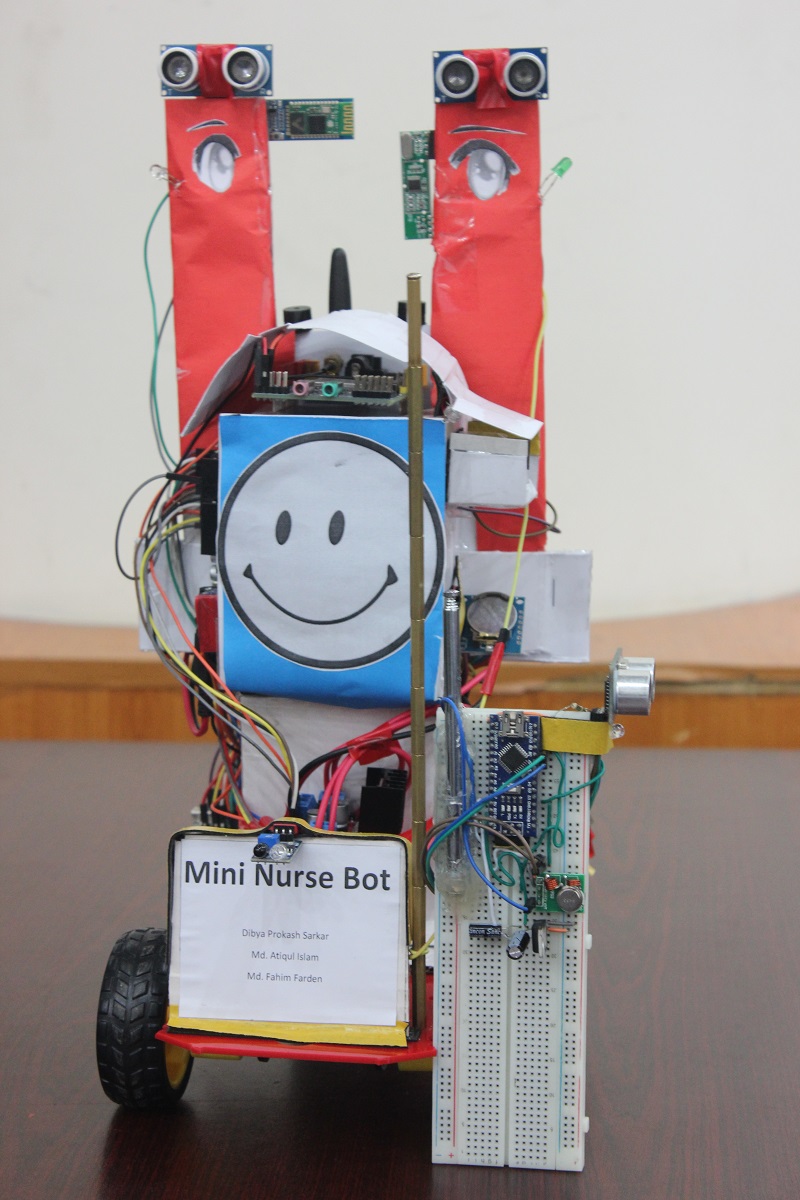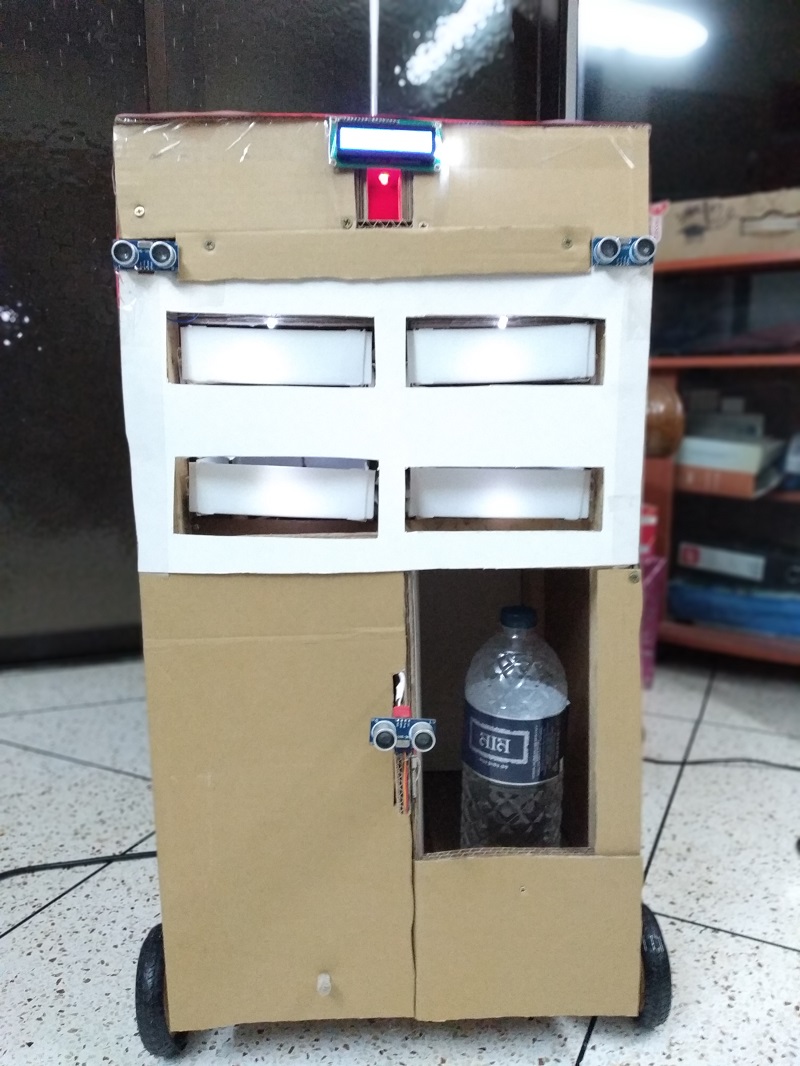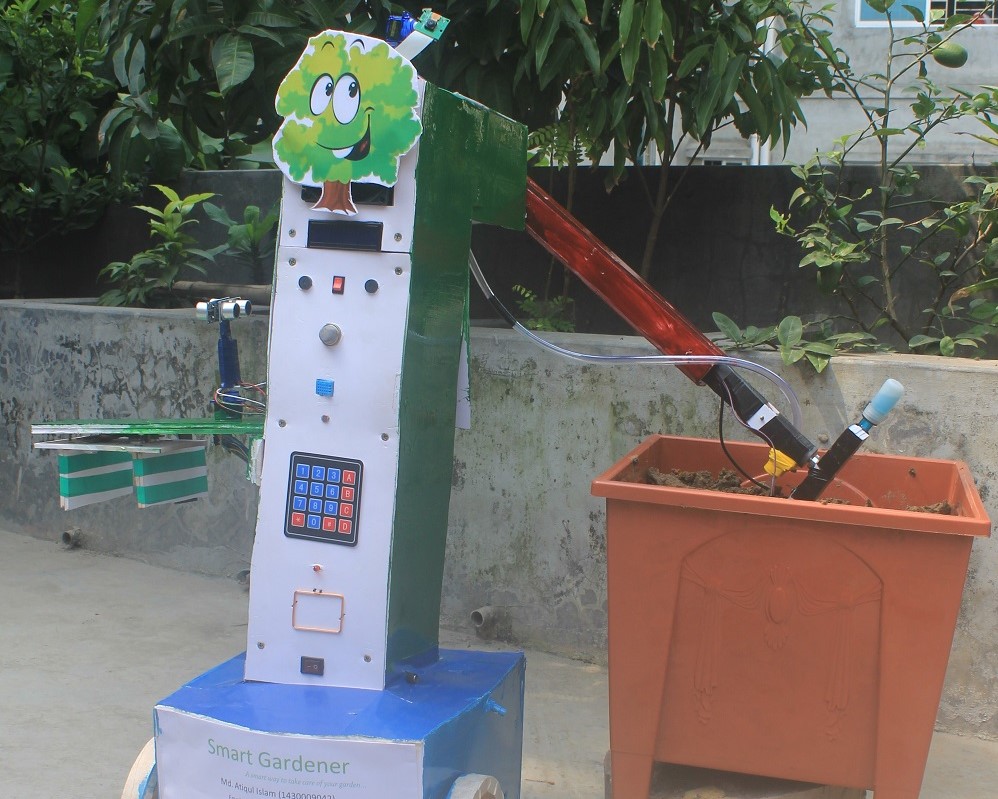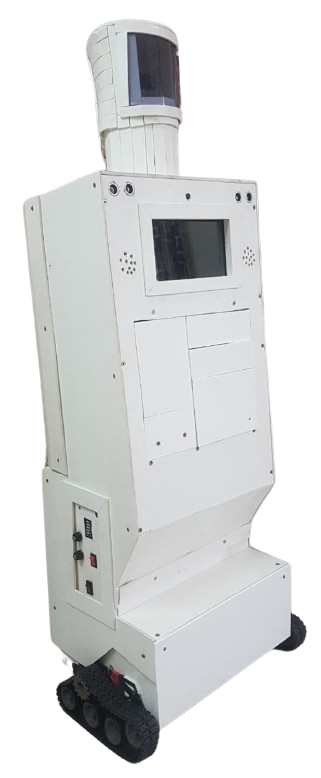Developed Robots

Mini Nurse-Bot: A Healthcare Assistance for Elderly People
In this study, an Arduino based mini nurse robot has been developed for assisting elderly people. Bangladesh which is a low income developing country has 7% of its total population of elderly people (60+ age) [8]. Elderly people are often neglected in this developing society where providing support is challenging from the family structure. An automated robot can assist them in such a situation, especially in healthcare. In the context of developing countries, automated solutions are not available and affordable compared to the developed countries. Our major contribution is to develop a low-cost healthcare robot for the elderly people to assist in taking medicines according to schedule.
-
Automated
-
Nursing Bot

SHEBA: A Low-Cost Assistive Robot for Older Adults in the Developing World
Maintaining independence and dignity is a primary goal of successful aging for older adults around the globe. Robots can support this goal in various ways by assisting everyday tasks that become challenging due to aging-related deterioration in physical and mental abilities. While a growing body of research tackles challenges in creating such robots, most work has focused on older adults with high socio-economic status in the developed world. In most cases, the price of these robots alone prohibits their potential use in the developing world. Further, socio-cultural differences in the developing world will limit the usability and chance of adoption of a robot designed based on users in the developed world. Our work aims to close this gap. In this paper we present findings from the user-centered design and development process of a low-cost assistive robot for older adults in the developing world named SHEBA, which is a Bengali term for care. We first interviewed 37 older adults and 21 caregivers in assisted and independent living settings in Dhaka, Bangladesh to gather requirements and understand priorities. We then developed a prototype focused on medication management and delivery and we brought it to an assisted living center to interact with potential older adult users. We interviewed 23 older adults and 5 caregivers who interacted with or observed our prototype to gather feedback. We present quantitative and qualitative data obtained in these interviews, identifying key requirements for robots designed for older adults in the developing world.
-
Automated
-
Nursing Bot

Smart Gardener
-
Automated
-
Gardener

SHEBA: Assistive Robot
Maintaining independence and dignity is a primary goal of successful aging for older adults around the globe. Robots can support this goal in various ways by assisting everyday tasks that become challenging due to aging-related deterioration in physical and mental abilities. While a growing body of research tackles challenges in creating such robots, most work has focused on older adults with high socio-economic status in the developed world. In most cases, the price of these robots alone prohibits their potential use in the developing world. Further, socio-cultural differences in the developing world will limit the usability and chance of adoption of a robot designed based on users in the developed world. Our work aims to close this gap. In this paper we present findings from the user-centered design and development process of a low-cost assistive robot for older adults in the developing world named SHEBA, which is a Bengali term for care. We first interviewed 37 older adults and 21 caregivers in assisted and independent living settings in Dhaka, Bangladesh to gather requirements and understand priorities. We then developed a prototype focused on medication management and delivery and we brought it to an assisted living center to interact with potential older adult users. We interviewed 23 older adults and 5 caregivers who interacted with or observed our prototype to gather feedback. We present quantitative and qualitative data obtained in these interviews, identifying key requirements for robots designed for older adults in the developing world.
-
Automated
-
Nursing Bot
